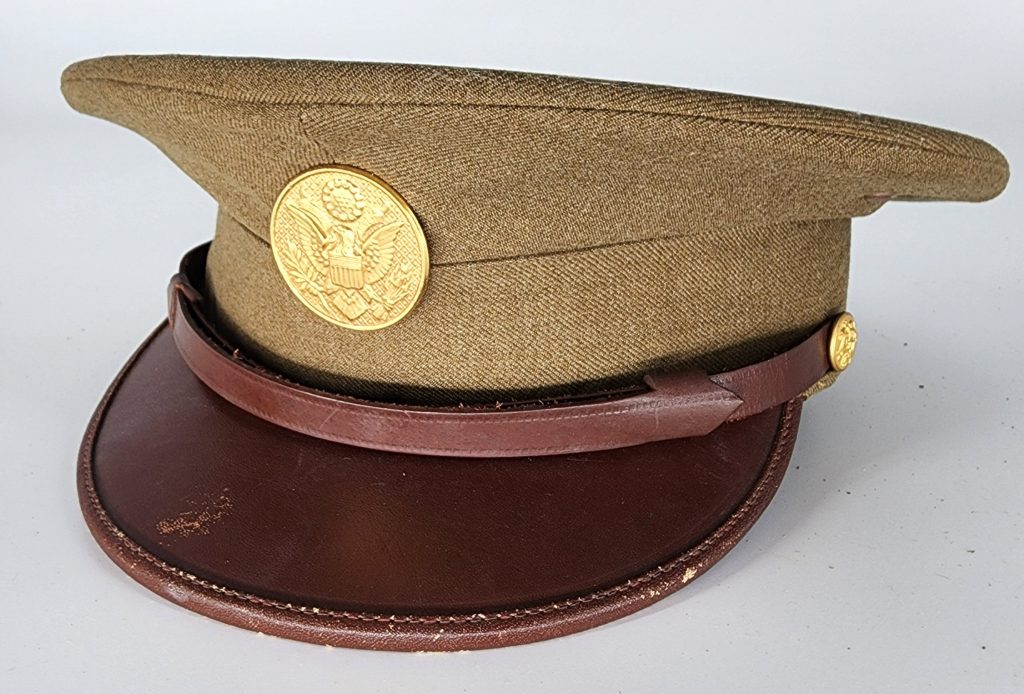The U.S. did not have a lot of different types of headgear during WWI, but there were many variations of each style used.
U.S. WWI Campaign Hat. Through the WWI, the campaign hat worn by American soldiers was fairly soft and made of felt. Those worn by the United States Army’s general officers had a golden cord around it, whereas other commissioned officers had a gold-and-black campaign cord around their hat. Other ranks had cords in their branch-of-service colors. The United States Marine Corps had the EGA badge in black at the front of their campaign hats; its officers had an additional golden-and-scarlet cord around their hat, whereas its other ranks had none.
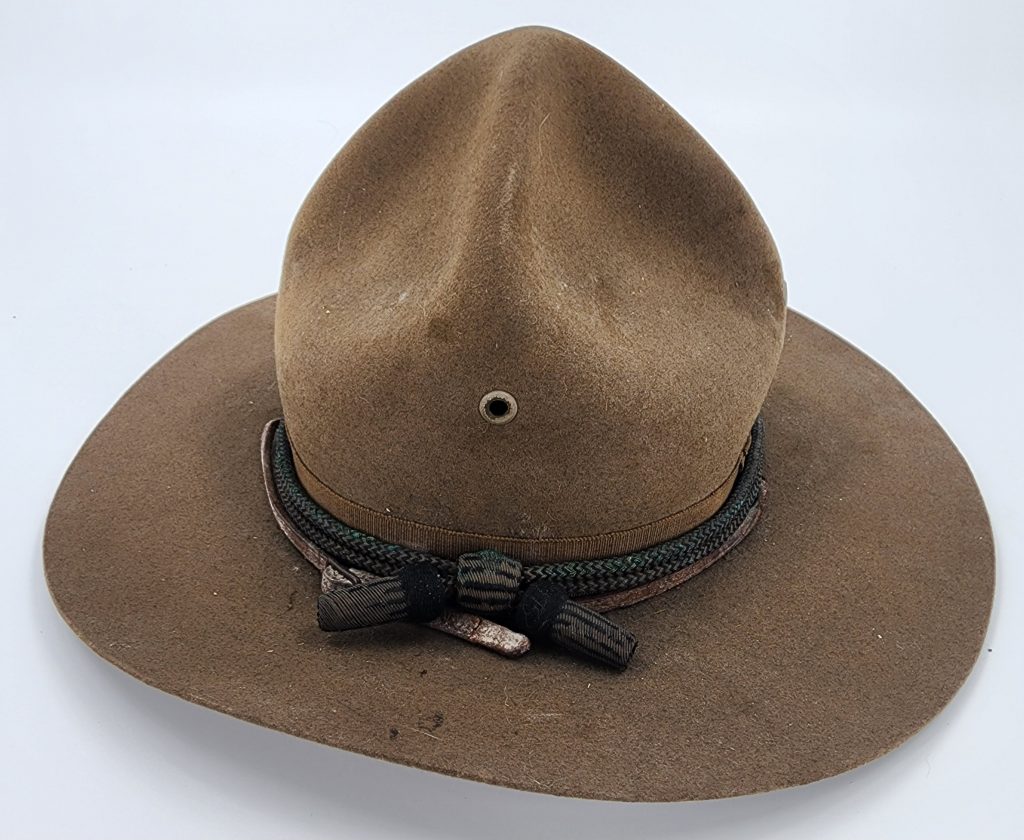
U.S. WWI Helmet. At the outbreak of WWI, none of the countries provided steel helmets to their troops. Soldiers of most nations went into battle wearing cloth, felt, or leather headgear that offered no protection from modern weapons. John Brodie was an entrepreneur and inventor who was working in London at the outbreak of WWI. A design patented by him in August 1915 offered advantages over the French helmet. It was constructed in one piece that could be pressed from a single thick sheet of steel, giving it added strength and making it simple to manufacture. The first delivery of the “Brodie” to British Army troops took place in September 1915. The U.S. Army adopted the basic Brodie-patterned with the M1917.
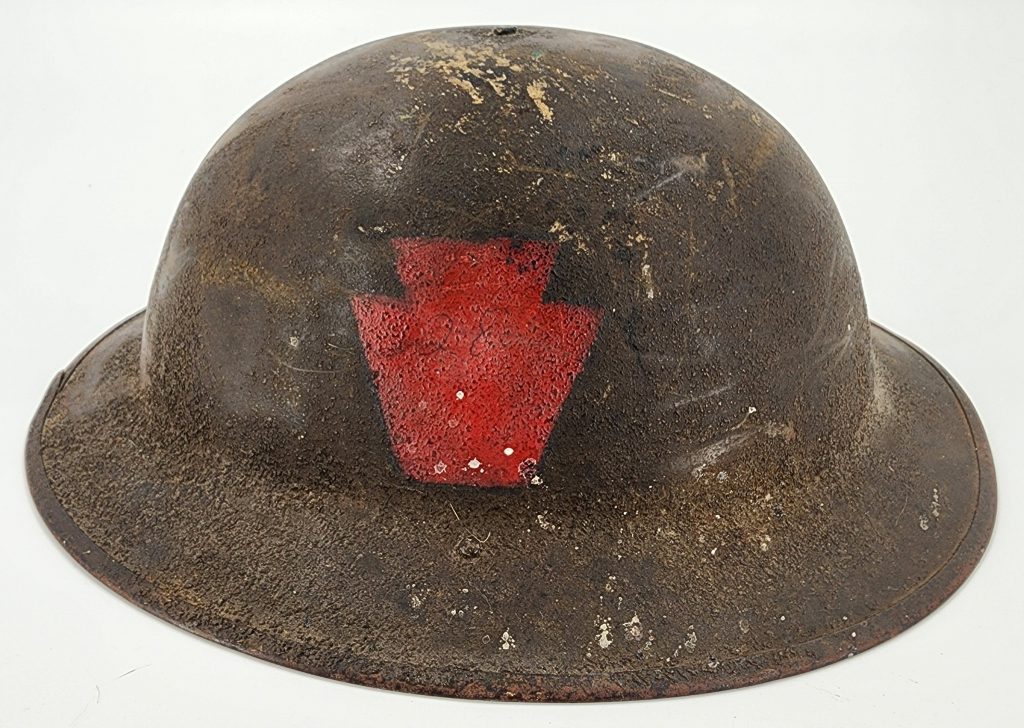
U.S. WWI Wool OD “overseas” cap replaced the campaign hat in 1917 and was worn in the rear areas of France. The new corps insignia disc was worn on the left side. Modeled after a French cap, the 1918 overseas cap was later to become the field or garrison cap and in 1940 and was authorized for wear in the U.S.
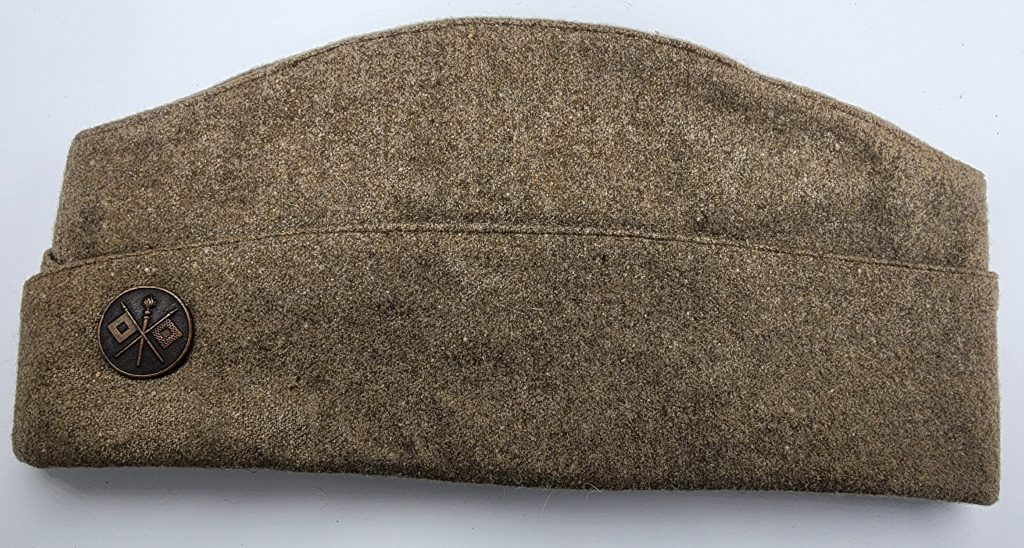
U.S. WWI M1910 Officer’s Hat with leather visor. The M1910 visor cap replaced the bell-crown model and was used up until the 1920’s.
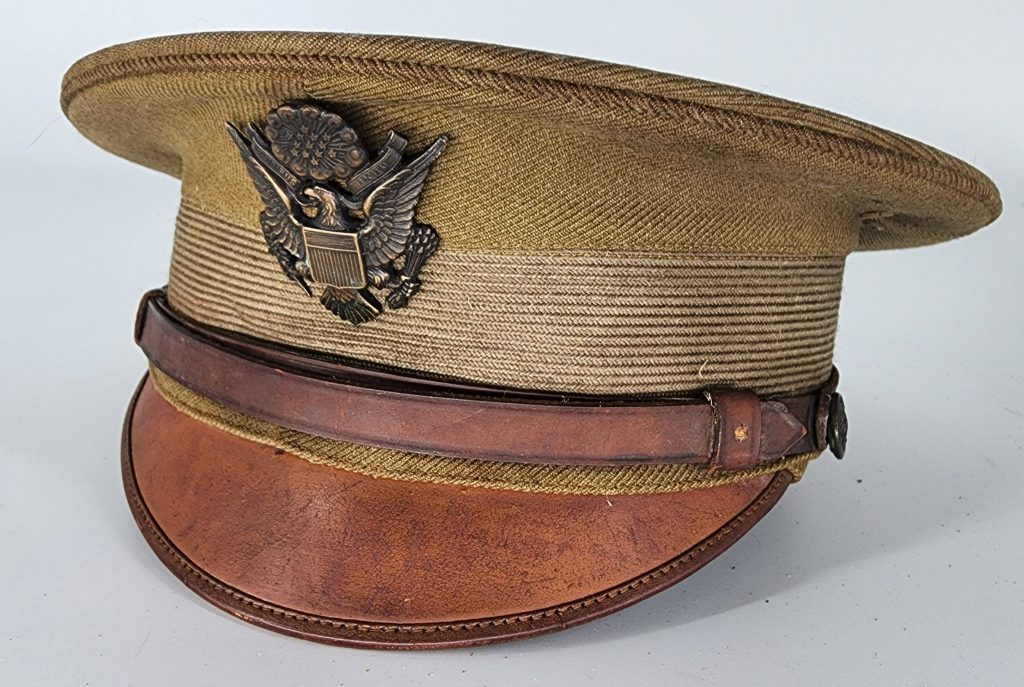
U.S. WWI M1910 EM Hat. The M1910 visor cap replaced the bell-crown model and was used up until the 1920’s.
